I’ve carried a Swiss Army Knife daily since the 70’s.
I had grown comfortable with the traditional design, but now they offer an updated design.
Before I could decide if I liked this new design, I needed to see how the new styled Swiss Army Knife Trekker compared to the Hiker!
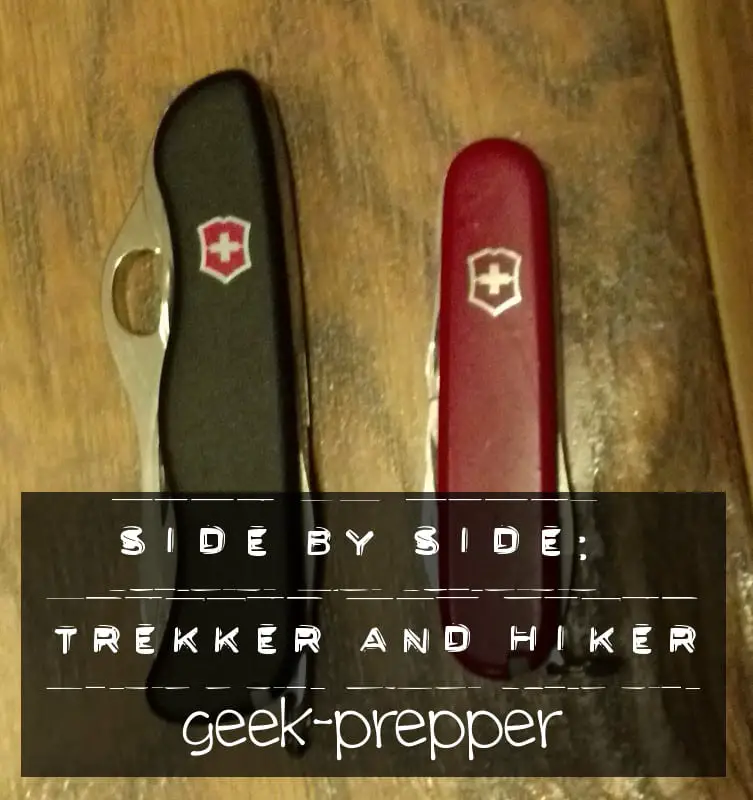
What the Swiss Army Knife is All About?
Before we go about discussing what the similarities and differences between the Swiss Army Knife Trekker and the Hiker are, let us have an overview of the Swiss Army Knife first.
The Original Knife carrying the Swiss Army logo was designed by Karl Elsenar in Ibach, Switzerland. From that specific moment, Victorinox gained success globally because of its continuous commitment to create Swiss Army knives with a high level of precision, functionality, and versatility.
Among the ones that continue gaining positive reviews because of the mentioned qualities are the Swiss Army Knife Trekker and the Swiss Army Knife Hiker. Get to know about these two everyday carry knives that you can use for survival situations, emergencies, or daily tasks.
Swiss Army Knife Trekker Compared to the Hiker
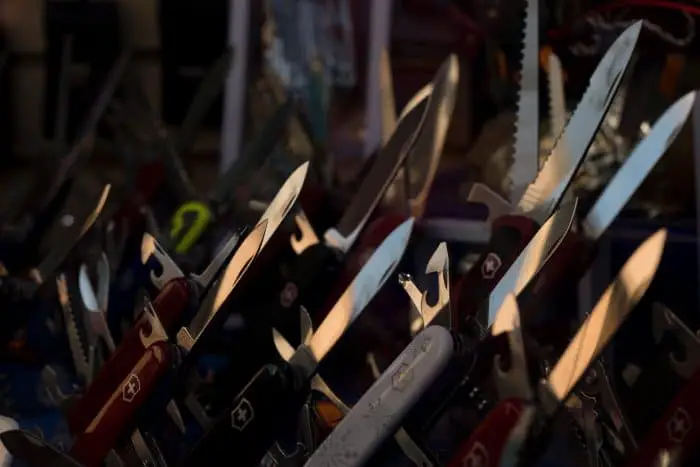
I just had to see how the new style of Swiss Army Knives measured up against the traditional Swiss Army Knife design. Is this redesign just a cosmetic change or was there some magical difference between this style and the older, traditional, classic style?
I just had to solve this mystery.
I went out and bought a Victorinox Swiss Army One-Hand Trekker. It has an almost identical configuration to my current EDC Swiss Army Knife, the Hiker and according to Victorinox, it is the official field knife for the German Army.
I really wanted to see that Trekker compared side by side with my trusty Hiker!
The Data
| Trekker | Hiker |
|
|
The Main Blades
The first thing I noticed was the blade difference. The Victorinox Swiss Army One-Hand Trekker isn’t just a cool name, it actually can be opened with one hand.
I have to admit, that is a pretty good change!
Once I opened the blades on both knives there was another obvious difference.
The blade on the Trekker was partially serrated. I’m on the fence about the serrations, but it’s not a deal breaker. The main blade comes with a 3.5-inch partial serration. However, unlike the other serrated knives, the serrations on the Trekker’s blade can be found toward its tip. You can also see a plain edge positioned towards the handle. I think this makes it a more favorable choice than the Hiker, especially for those who prefer to put their knife’s plain edge closer to their hands as a means of gaining more control.
This control is particularly helpful when you strip wire, create a fuzz stick, and whittle, among many other possible functions. I can also say that the serrations are capable of cutting more efficiently with the lower risk of snagging.
Another major difference of the Trekker’s main blade is that it tends to lock using a steel liner. This provides sufficient security for the majority of tasks but you can expect it to also have extra blade-play in almost all directions, which is not the case in other modern knives, like the Hiker.
The Trekker’s blade is also not as pointy. I guess this is ok, because I can’t recall the last time I was dead set on trying to stab anything with my Hiker.
Now for the really good news. The Trekker’s blade locks open. It’s has a locking blade. My prayers have been answered. This feature really raises the value of this knife!
It has a reversed liner lock orientation. You can open it up by pushing the knife to the right, not the left. Another difference is that it features a cut-out shaped like a half-moon, which promotes ease in opening the main blade single-handedly with the least effort. However, the back-spring resistance makes it impossible for you to flick the Trekker open.
Ok, as awesome as one-handed opening and a locking blade are, we can’t stop here. There’s more doo-dads to look into.
Bottle Opener and Large Screwdriver
The screw driver on the bottle opener attachment is much larger. I know on many occasions, that a larger flat screwdriver would have been very helpful. This is a nice update.
Another item of note, the bottle opener and large screwdriver also lock open!
Can Opener and Small Screwdriver
The can openers shape had changed a bit, but that’s about it. The revised shape did have a bit better dig or grip than it’s predecessor.
Wood Saw
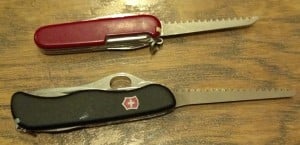
The Wood Saws both have the alternating teeth and excellent bite. It offers just enough gap space to prevent clogging. The length of the Trekker’s saw is longer and the angle of it makes sawing even easier than it is with my Hiker. This says a lot, because my Hiker has a fantastic saw!
Philips Screwdriver
I love having a Philips screwdriver, but I will never understand the positioning of it on the Swiss Army Knives. Thanks for including one, but isn’t there a better way?
The Reamer or Awl
This is the tool that always seems to cut me. If it’s not closing on my fingers and cutting them, then I find myself trying to push it closed the wrong way, cutting myself anyway.
This is a handy tool, to poke holes in leather or canvas, it’s too bad that the Trekker doesn’t have the sewing eye.
I’ve only used that sewing eye, on the hiker, a couple of times, but I like the idea of having it there.
Functionality
In terms of functionality, you will notice a slight difference between the Swiss Army Knife Trekker and the Swiss Army Knife Hiker. The Swiss Army Knife Hiker boasts it’s 13 tools, allowing any survivalist to cover many of the essential tool bases while bugging out the wilderness.
Among the tools included in the Hiker that make it capable of handling its thirteen promised functions, are the small and large blades, can opener, bottle opener, 3-mm and 6-mm screwdrivers, wire stripper, wood saw, Phillips screwdriver, sewing awl, punch, and reamer.
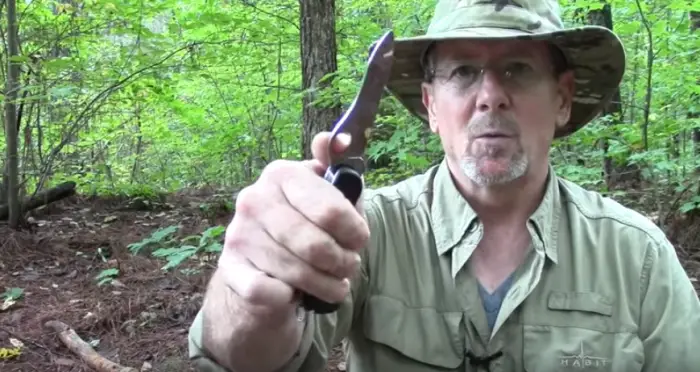
The Trekker, on the other hand, can perform around a dozen functions.
The main tools that the Trekker welds are the main blade, small screwdriver, can opener, a combination of wire stripper, flathead screwdriver, and cap lifter, wood saw, keyring, tweezers, Phillips screwdriver, and reamer or awl.
In terms of construction, the two share the commonality in mainly using stainless steel. This makes both the Trekker and the Hiker showcase a rugged and sleek design.
Handle
In terms of the handle, the Trekker seems to have an edge over the Hiker. The Hiker comes with a red composition handle while the Trekker takes pride in its ergonomic black handle known for having a profile or design that offers more leverage and grip than the former.
The handle features ergonomically-curved finger grooves as well as slightly textured scales. Such makes the knife obtain more grip compared to the typical knives, particularly the Hiker.
Conclusion
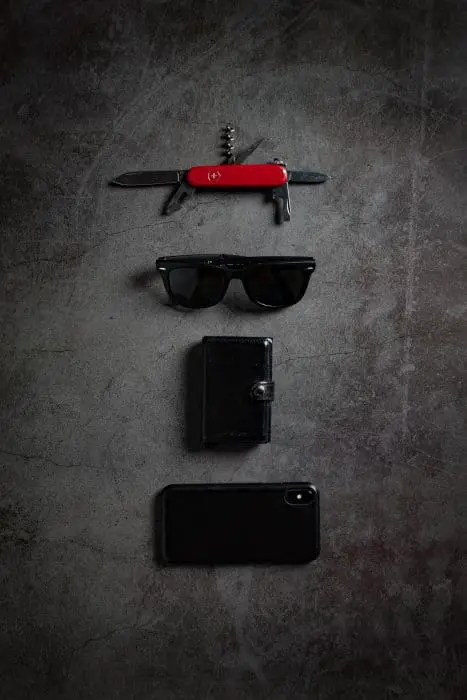
Due to the one-handed opening and the locking knife blade, I think the Trekker is the winner here, if you are OK with it being an inch longer. It didn’t beat out the Hiker by much, because it’s a hard knife to top!
Maybe neither the Trekker or the Hiker appeals to you, but there’s probably a Swiss Army Knife that’s right for you!
Take note that regardless of the Swiss Army Knife from Victorinox that you decide to choose, whether it is the Hiker, Trekker, or any other model of the brand’s Swiss Army Knife, you can be sure they will last a long time and serve multiple purposes for survival.

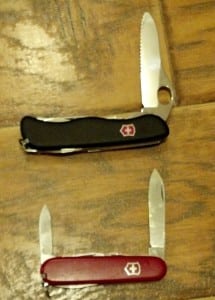
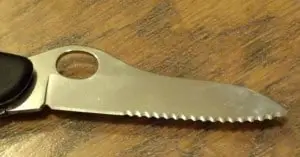
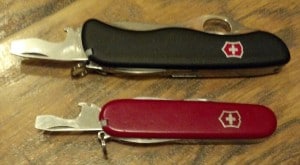
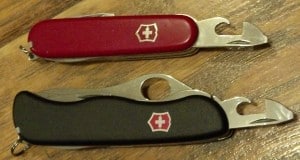

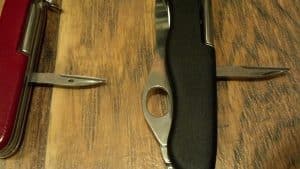
Certainly in the UK and I think alot of other countires as well the trecker is illegal to carry. It is locking and beyond the specified maximum length. If it is legal in your country and you don’t want whilst travelling go for it but be aware if you do not have a very good reason to carry it you will be prosecuted if caught.
While true, that is mostly because knife laws in the UK are archaic and seek to be a solution to a problem that doesn’t exist. Anywhere there is violence towards others, particularly with “weapons”, that is a people problem, not a problem with knives/guns/lightsabers/etc.
That being said, it’s too bad the locking blade and length make this illegal in the UK; a lot of bushcrafters would get some serious (legitimate) use from a tool like this.
You really don’t understand why the Phillips is where it’s at???? It gives you a t-grip which is stronger and it’s centered allowing you to apply pressure while starting a screw. That is perfection.
Nice review! I have both, and love them both too. The extra strength built into the Trekker appeals to me, but I love how the Hiker carries in the pocket. Saw-wise, both are tough to beat. I’ve used both in the woods on hikes, and both have performed flawlessly. I do miss the eye on the awl, but then again, I started carrying Vics in the days prior to eyelets in the awls. It does make stitching interesting!